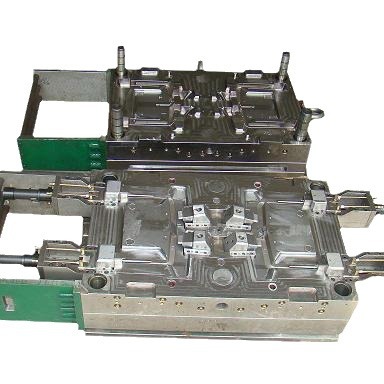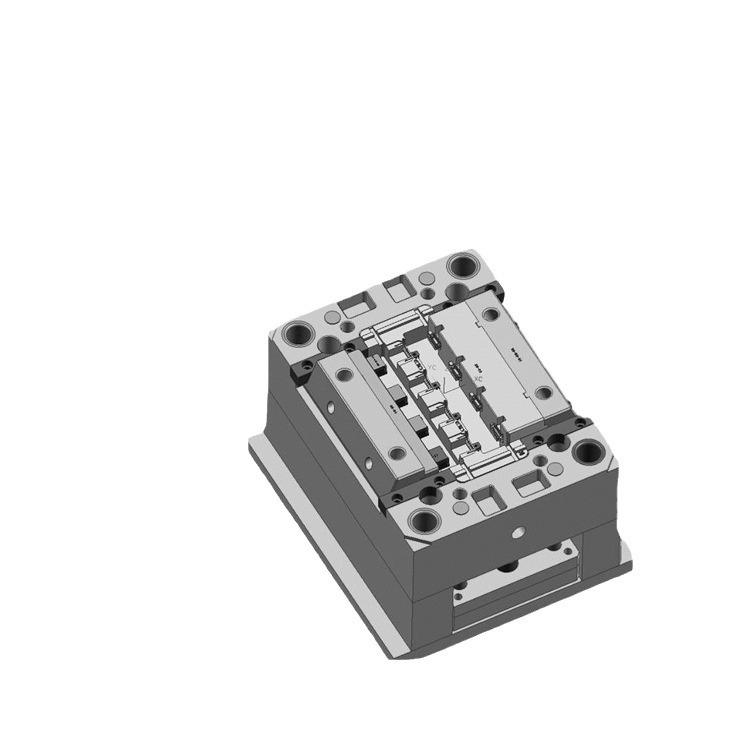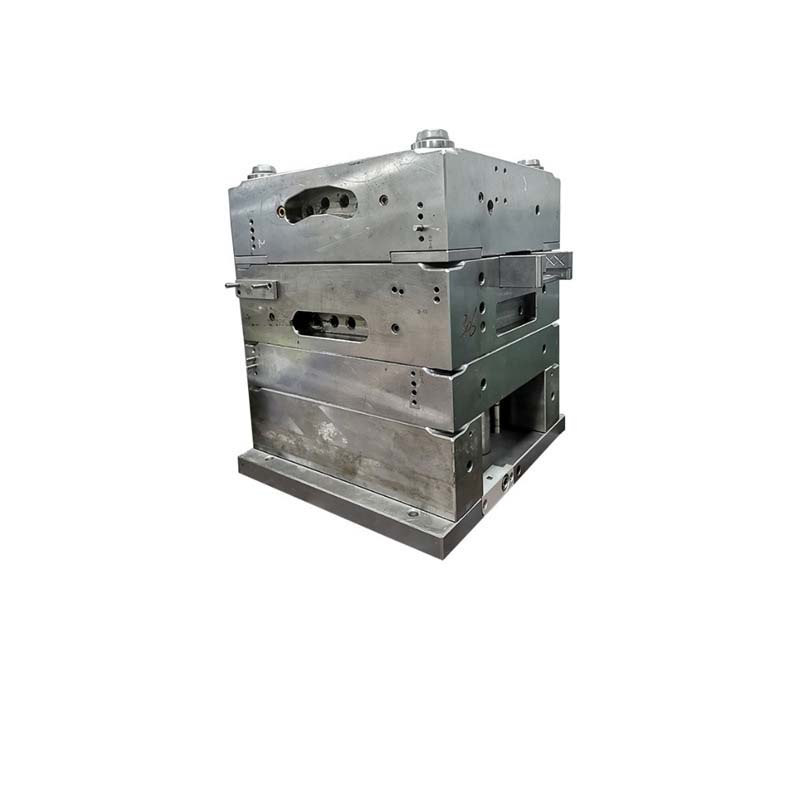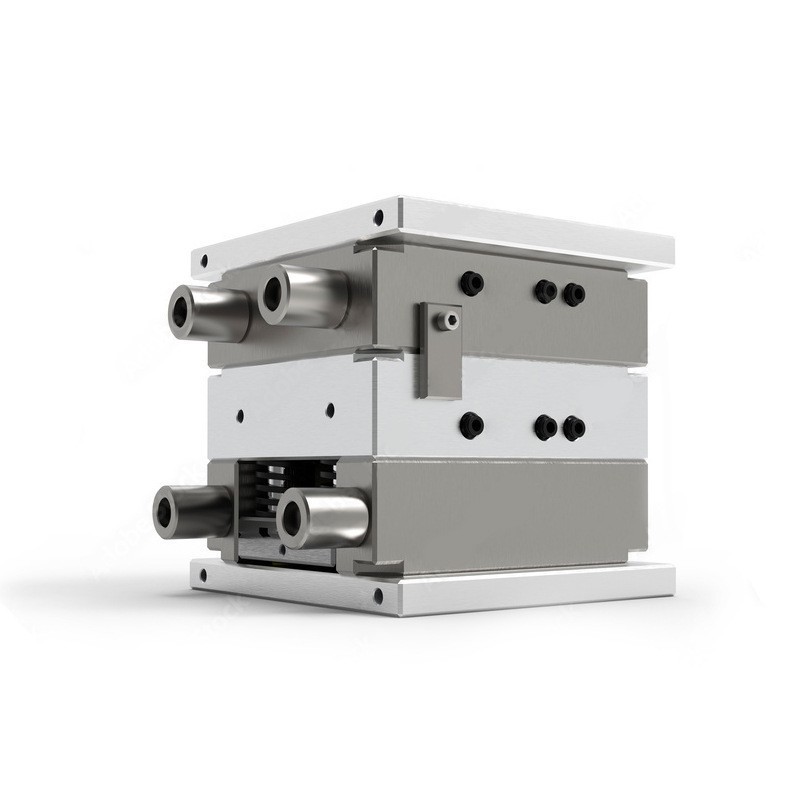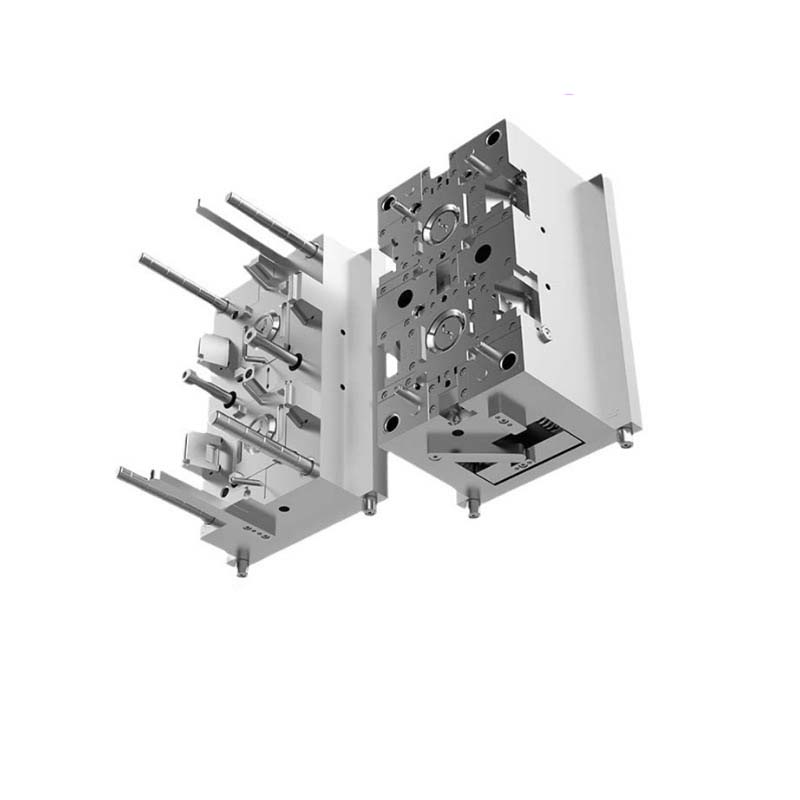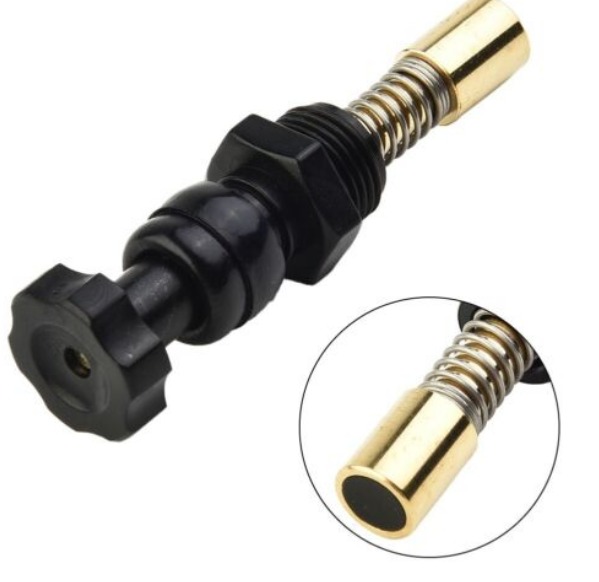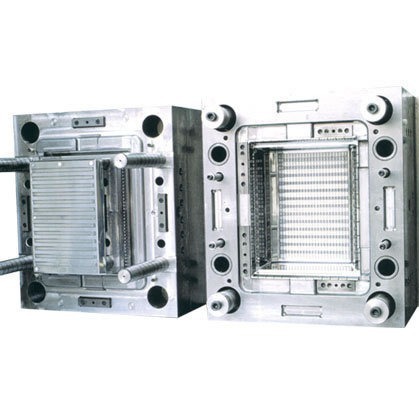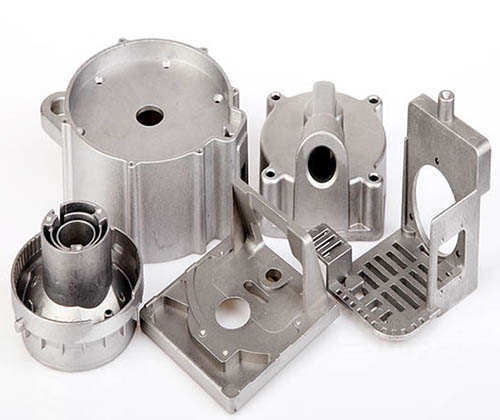Understanding the Predicament: Why Forming Conditions Aren't Enough
In the complex realm of mold processing, there are times when adjusting the forming conditions simply doesn't cut it. Let's take a closer look at some of the common culprits behind this predicament.
Material Anomalies
The materials we work with can sometimes throw us a curveball. For instance, if the material has inconsistent viscosity, it can lead to uneven filling of the mold cavity. According to a study by [a well - known materials research institute], up to 30% of initial mold - related issues can be traced back to material - related problems. When the viscosity is too high, the material might not flow properly into all the nooks and crannies of the mold, resulting in incomplete parts. On the other hand, if the viscosity is too low, it could cause issues like flash or poor dimensional accuracy.
Another material - related factor is the presence of impurities. Even a small amount of foreign particles in the raw material can disrupt the forming process. These impurities can act as stress concentrators, leading to cracks or defects in the final product. In extreme cases, they can even damage the mold surface over time.
Wear and Tear from Extended Use
Molds, like any other mechanical components, experience wear and tear during their lifespan. The constant friction between the mold and the material, as well as the repeated thermal cycling (heating and cooling during the molding process), can take a toll on the mold's integrity.
In injection molding, for example, the high - pressure injection of molten plastic can erode the inner surfaces of the mold cavity. Over thousands of cycles, the surface roughness of the cavity can increase significantly. A study on injection mold wear showed that after 100,000 cycles, the surface roughness of the mold cavity can increase by up to 50%, which in turn affects the surface finish and dimensional accuracy of the molded parts.
Moreover, the mechanical stress during the opening and closing of the mold can cause components like pins, slides, and cores to gradually lose their original shape and tolerance. This misalignment can lead to issues such as inconsistent wall thickness in the final product or difficulty in ejecting the molded part from the mold.
Common Issues Needing Mold Repair
Surface Defects
Mold surface defects are among the most visible and troublesome issues. Scratches can occur during the handling, cleaning, or due to foreign particles getting trapped between the mold and the material. Even a minor scratch on the mold surface can be replicated onto the product, affecting its aesthetics. For example, in the production of plastic cosmetic packaging, a scratched mold can result in visible lines on the surface of the container, making it unappealing to consumers.
Wear is another common problem, especially in high - volume production. The continuous contact between the mold and the material gradually erodes the mold surface. In injection molding of metal parts, the high - pressure injection of molten metal can cause significant wear on the mold cavity walls over time. This wear not only changes the surface roughness of the mold but can also lead to dimensional changes in the long run.
Corrosion can be a major concern, especially when the mold is exposed to moisture, chemicals, or certain environmental conditions. For instance, in the production of food - grade plastic products, if the mold is not properly cleaned and dried, it can be susceptible to corrosion. Corroded areas on the mold can flake off, contaminating the product and also creating uneven surfaces that affect product quality. A study on mold corrosion in the food - packaging industry found that about 15% of mold - related product defects were due to corrosion issues.
Dimensional Inaccuracies
Dimensional inaccuracies in molds can have far - reaching consequences for product quality. If the mold has size deviations, the resulting products may not fit together as intended. In the automotive industry, for example, if the mold for manufacturing engine components has a dimensional error, the parts produced may not assemble correctly, leading to engine malfunctions.
There are different types of dimensional problems. Undersized cavities in the mold can result in products that are smaller than the required specifications. This could be due to incorrect initial mold design, where the shrinkage rate of the material was miscalculated. On the other hand, oversized cavities can lead to products that are too large. A study in the electronics manufacturing sector showed that 20% of rejected plastic components were due to dimensional inaccuracies in the molds, highlighting the significant impact of this issue.
Another aspect is asymmetry in the mold. If the mold is not symmetric, the products will have uneven shapes. In the production of plastic pipes, an asymmetric mold can result in pipes with inconsistent wall thicknesses. This not only affects the structural integrity of the pipes but also their performance, such as water flow in plumbing applications.
Techniques for Mold Repair
Welding
Welding is a widely used method for mold repair, especially when dealing with significant damage such as large cracks or broken sections. Applicable Scenarios: Welding is highly effective for molds made of metals like steel or aluminum. For example, in die - casting molds, which often experience high - stress conditions, when a crack develops due to thermal cycling and mechanical stress, welding can be used to mend the crack. In a case study of an automotive parts manufacturing company, a die - casting mold for engine components developed a crack after 50,000 production cycles. Welding was successfully employed to repair the mold, allowing it to continue production for another 30,000 cycles.
Welding Material Selection: The choice of welding material is crucial. For steel molds, if the mold is made of low - carbon steel, a matching low - carbon steel welding rod can be used. However, for high - strength alloy steel molds, specialized alloy welding rods need to be selected to ensure that the welded joint has similar mechanical properties to the original mold material. For instance, when repairing a high - speed steel mold used in precision forging, a high - speed steel welding rod with similar chemical composition and hardness characteristics is required.
Process Steps: First, the damaged area of the mold needs to be thoroughly cleaned to remove any dirt, oil, or oxide layers. This can be done using solvents like acetone or by mechanical cleaning methods such as sandblasting. Then, a suitable welding process is chosen, such as arc welding, gas - tungsten arc welding (GTAW), or laser welding. In arc welding, the welder needs to adjust the welding current, voltage, and welding speed according to the thickness of the mold and the type of welding rod. After welding, the welded area usually requires post - weld heat treatment to relieve stress and improve the mechanical properties of the joint. This may involve annealing or tempering, depending on the mold material.
Electroplating
Electroplating is another valuable technique for mold repair, with unique principles and advantages. Principle: Electroplating works on the principle of electrolysis. The mold, which serves as the cathode, is placed in an electrolyte solution containing metal ions of the desired plating material. When an electric current is applied, the metal ions in the solution are reduced and deposited onto the surface of the mold, forming a thin layer of the plating metal.
Advantages: One of the main advantages of electroplating for mold repair is its ability to enhance the surface properties of the mold. For example, electroplating with chromium can significantly increase the surface hardness of the mold. A study showed that after chromium electroplating, the surface hardness of a plastic injection mold increased by about 50%, which greatly improved its wear resistance. This is particularly beneficial for molds used in high - volume production, where the surface of the mold is constantly in contact with the molding material.
Moreover, electroplating can also improve the corrosion resistance of the mold. In the production of molds for the food and beverage industry, where the mold may be exposed to moisture and acidic substances, nickel or chromium electroplating can protect the mold from corrosion, thereby extending its service life.
Grinding and Polishing
Grinding and polishing play a crucial role in repairing mold surface defects. Role: Grinding is mainly used to remove large - scale surface irregularities, such as burrs, scratches, or uneven surfaces. By using abrasive wheels of different grit sizes, the damaged surface layer of the mold can be gradually removed until a relatively smooth surface is obtained. For example, if a mold has deep scratches caused by improper handling, coarse - grit grinding wheels can be used initially to level the surface.
Polishing, on the other hand, is focused on achieving a high - quality surface finish. It can eliminate the fine scratches left by grinding and give the mold surface a mirror - like appearance. In the production of molds for optical products, such as lenses, a high - level of surface smoothness is required. Polishing can ensure that the mold surface has a roughness of less than 0.1μm, which is essential for producing lenses with high optical quality.
Operation Points: During grinding, it is important to control the grinding pressure and speed to avoid over - grinding, which could lead to dimensional changes in the mold. The selection of the appropriate grinding wheel is also crucial. For hard - to - machine materials like high - alloy steel molds, diamond - impregnated grinding wheels may be used.
In polishing, the choice of polishing agents and tools is key. For soft materials, such as some aluminum molds, a soft polishing cloth with a fine - grained polishing compound can be used. The polishing process should be carried out in a clean environment to prevent the introduction of foreign particles that could scratch the polished surface.
Case Studies: Real - World Examples of Successful Mold Repairs
Case 1: Injection Mold Repair in the Electronics Industry
A well - known electronics manufacturing company faced a serious issue with an injection mold used to produce plastic housings for smartphones. After 80,000 production cycles, the mold started to show signs of wear, especially in the cavity area. The surface roughness increased from an initial value of 0.2μm to 0.8μm, and there were visible scratches. As a result, the surface finish of the plastic housings was severely affected, with about 15% of the products being rejected due to aesthetic defects.
The company decided to repair the mold using a combination of grinding, polishing, and electroplating. First, the damaged surface was ground using a diamond - impregnated grinding wheel to remove the scratches and reduce the surface roughness to around 0.3μm. Then, a fine - polishing process was carried out to further reduce the roughness to 0.1μm. Finally, chromium electroplating was applied to enhance the surface hardness and wear resistance.
After the repair, the mold was put back into production. The surface finish of the plastic housings improved significantly, and the rejection rate dropped to less than 3%. The mold was able to continue production for another 50,000 cycles, demonstrating the effectiveness of the repair methods.
Case 2: Die - Casting Mold Repair in the Automotive Sector
An automotive parts manufacturer encountered a problem with a die - casting mold for engine cylinder heads. Due to the high - temperature and high - pressure environment during die - casting, the mold developed several cracks after 30,000 production cycles. These cracks led to defects in the cylinder heads, such as porosity and uneven wall thickness, resulting in a rejection rate of 20%.
Welding was chosen as the primary repair method. Before welding, the mold was thoroughly cleaned and pre - heated to reduce the risk of thermal stress during welding. A high - strength alloy welding rod, matching the material of the mold, was used for the repair. After welding, the welded areas were carefully ground and polished to ensure the dimensional accuracy and surface smoothness of the mold.
After the repair, the mold was tested, and the production resumed. The rejection rate of the cylinder heads decreased to 5%, and the mold could be used for another 20,000 production cycles. This case shows how proper mold repair can solve production - halting problems and save significant costs for the manufacturer.
Yigu Technology's Perspective
As a non - standard plastic metal products custom supplier, Yigu Technology understands the criticality of mold repair in ensuring smooth production processes. With years of experience in the industry, we have witnessed firsthand how a well - maintained and repaired mold can significantly enhance product quality and production efficiency.
Our team of skilled technicians is proficient in various mold repair techniques. We use state - of - the - art equipment to accurately diagnose mold problems, whether it's surface defects or dimensional inaccuracies. For us, mold repair is not just about fixing the visible issues but also about preventing future problems. We always conduct a thorough analysis of the root cause of the mold problem, be it material - related, due to wear and tear, or other factors, to ensure that the repaired mold can withstand the rigors of long - term production.
Moreover, we keep ourselves updated with the latest advancements in mold repair technologies. This allows us to offer our clients the most effective and efficient repair solutions, minimizing downtime and maximizing the lifespan of their molds.
